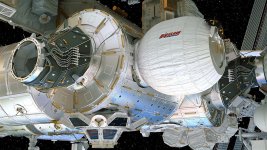In an unprecedented boost for interstellar travel, the Silicon Valley philanthropist Yuri Milner and the world’s most famous cosmologist Stephen Hawking have announced $100m (£70m) for research into a 20-year voyage to the nearest stars, at one fifth of the speed of light.
Breakthrough Starshot – the third Breakthrough initiative in the past four years – will test the knowhow and technologies necessary to send a featherweight robot spacecraft to the Alpha Centauri star system, at a distance of 4.37 light years: that is, 40,000,000,000,000 kilometres or 25 trillion miles.
A 100 billion-watt laser-powered light beam would accelerate a “nanocraft” – something weighing little more than a sheet of paper and driven by a sail not much bigger than a child’s kite, fashioned from fabric only a few hundred atoms in thickness – to the three nearest stars at 60,000km a second.
Near-lightspeed flight by a spacecraft would have been unthinkable 15 years ago. The gamble is that it could be possible within 15 years, with accelerating advances in microelectronics, nanotechnology and laser engineering. The research programme will be led by Pete Worden, until last year the head of the Nasa Ames research centre. Milner, Hawking and the Facebook founder Mark Zuckerberg, already a partner in the fundamental science initiative, comprise the board, which will advised by a committee of distinguished engineers and scientists. This committee has already identified 20 formidable challenges to be overcome before any possible takeoff for the stars.







